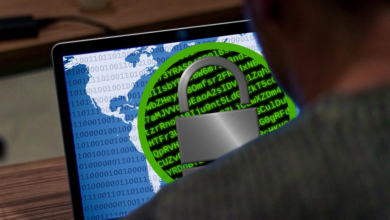Zero Trust: Why Is It Essential for Enterprise Cyber Security?
What is Zero Trust? A Zero Trust model is a security architecture that strengthens the enterprise by eliminating implicit trust and imposing strict user and device authentication across the network. It is said that this model works on the agenda of trusting no one. Even if the user is on the network, they might be compromised.
This model has been adopted by Google, and Cisco shortly after it was launched in 2010 and it supports micro-segmentation as the fundamental principle of cybersecurity. It allows IT, professionals, to wall off-network resources so that future threats can be easily contained and not distributed around the enterprise infrastructure. Zero Trust model brings improved visibility, increased productivity, better usage of your IT resources, and facilitated compliance, and the list of benefits goes on. As a leading IT Support Los Angeles company, we assist you with the Zero Trust model to provide robust protection against the increasing number of threats.
What are the core benefits that Zero Trust provides?
Reduces CAPEX and OPEX
The Zero Trust model highly contributes to reducing overall capital expenditure (CAPEX) and operating expenses (OPEX) by letting businesses consolidate multiple security controls across the network. Zero Trust also reduces the number of management consoles needed by the network and hence, reduces OPEX by simplifying security management. Moreover, cloud-based Zero Trust solutions also eliminate the complexity when shifting IT infrastructure to a cloud-based approach. A cloud vendor can help you move from CAPEX to OPEX as well as let you scale up and down accordingly whenever needed.
Improve Data Protection
The Zero Trust model functions exactly as it sounds, i.e. trust no one. It prevents rogue workers or malware from accessing vast portions of your network. Once the malware has gained access to your network, it can easily locate and extract your consumer data or intellectual property. Consequently, restricting what users can access, and how long they can access, goes a long way towards mitigating the impact of a security breach.
As businesses encounter cybersecurity threats more often, access to a company’s digital assets and data points is restricted to a limited dataset. It is also time-bound, which reduces the chances of your data being found by bad actors.
Reduces Scope and Cost of Compliance
The Zero Trust model inherits segmentation of the security layer, thereby reducing the scope of compliance audits and regulations. By breaking up the network security perimeters and dividing it into small zones, it is then easy to maintain and control access over different parts of the network.
Flexibility when migrating data, applications, and services
Businesses usually have varying needs of technology depending on their goals and which is why their applications, data, and IT services move around a lot within the corporate IT infrastructure. Without a Zero Trust model, a security administrator is forced to manually recreate the security policy at the new location to move data from private data centers to cloud environments. This is not just a lengthy and mundane process but also prone to unforeseen human errors that can lead to security vulnerabilities. On the other hand, the Zero Trust model can centrally manage apps and data security policies and transfer them while automation tools can be utilized to transfer it wherever needed.
Simplify IT Management
Continuous monitoring and analytics are the base of the Zero Trust model. It uses automation to evaluate access requests. Access is granted automatically if the privileged access management (PAM) system considers the request to be standard based on key identifiers. Hence, IT will have to be involved only when the automated system flags requests as suspicious.
More usage of safe automation will eventually reduce the number of humans working on it. This can easily save human resources that can be utilized to contribute to the core business activities, innovation, and improvement.
Improved End-user Experience
One of the problems that end-users face is remembering passwords during their jobs to access applications and data. The Zero Trust model gives the ability to leverage single sign-on (SSO) tools that simplifies the process of remembering passwords.
This SSO framework also guides in organizing the infrastructure resources that users or devices must have access to. SSO enables users to log in once and gain access to anything they need. This reduces password mismanagement by allowing users to quickly access data they require while single or multi-factor authentication and access controls run in the background.
Enables Digital Business Transformation
Zero Trust network’s segmented reality is about how security teams can support the introduction of new services with the necessary privileges and data protection, without interfering with existing business and employee productivity.
This directly communicates that IT teams will integrate more IoT devices in the future as Zero Trust reduces the IoT attack service. Moreover, Zero Trust initiatives should be included in all devices to provide maximum visibility as it will lead to improved operational control and network security. But for businesses new to this approach, it’s recommended to take this in phases in order to have control over business disruption during the process.
Facilitate the Move to the Cloud
As traditional firewalls and gateways weren’t designed considering the cloud, the number of organizations moving to SaaS and IaaS platforms can’t use familiar perimeter security solutions. Most of the time, security teams have been paranoid about giving their cloud access to anybody and even if they decide to, the lack of custom access can result in giving too much access to everybody.
As the cloud-based Zero Trust architecture represents a new solution to secure data in the cloud and your data center, it also allows the business owner to control how it works. It comes with an authentication mandate to provide end-users with a single sign-on capability. Moreover, this tailored model also allows a sense of freedom from the fear of giving access to partners, customers, or suppliers.
Are you ready to leverage the Zero Trust model?
More and more businesses are adopting it as part of their managed IT services in Los Angeles. The Zero Trust model allows businesses to level up their security measures around their IT infrastructure along with enabling growth and scalability. In the realm of cybersecurity jobs, Jooble offers diverse opportunities to contribute and thrive in this evolving landscape.
________________________________________________________________________________
About the Author

Brent has been featured in Fast Company, CNBC, Network Computing, Reuters, and Yahoo Business. He also leads SMBTN – Los Angeles, an MSP peer group that focuses on continuing education for MSPs and IT professionals. DCG was recognized among the Top 10 Fastest Growing MSPs in North America by the MSP mentors. Stay connected on LinkedIn.






